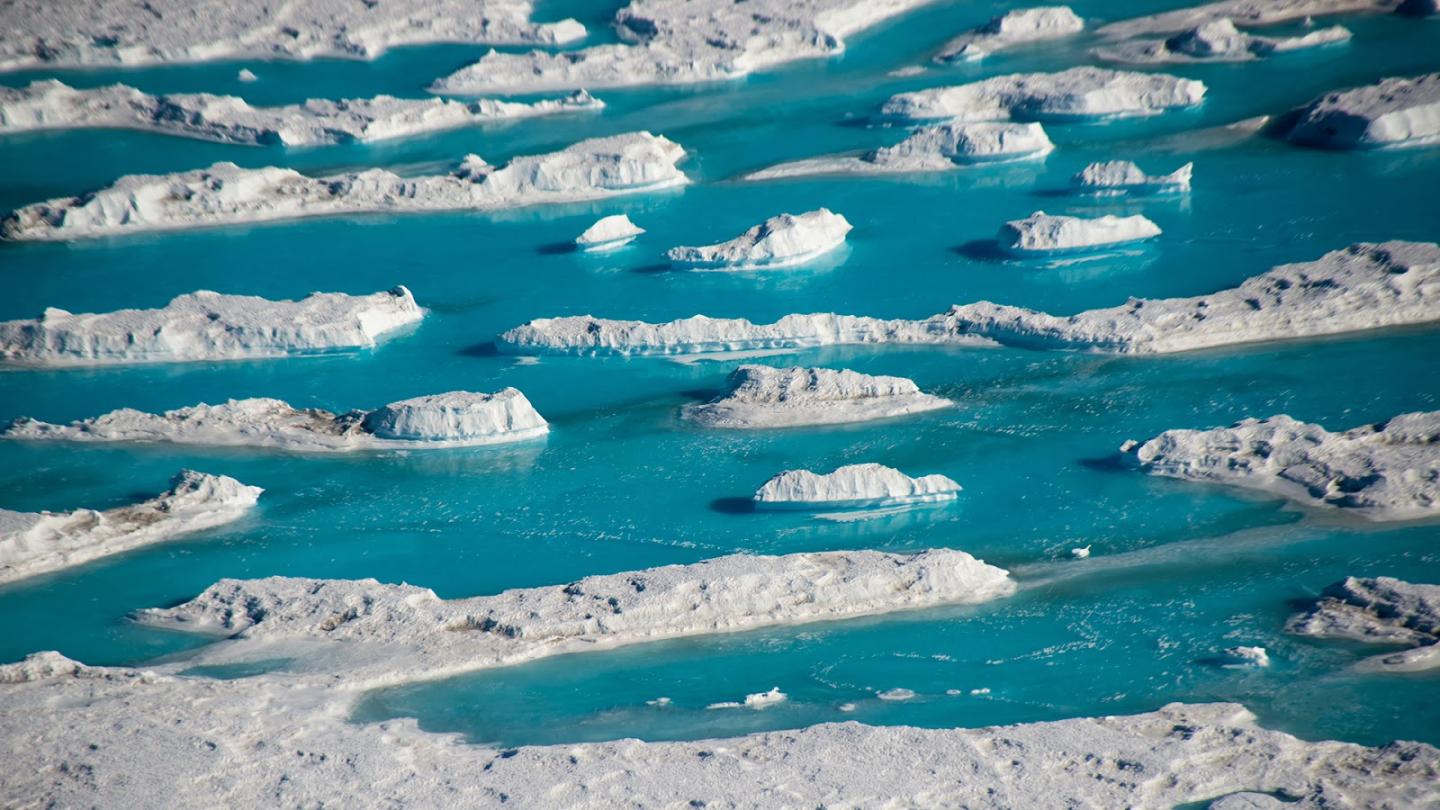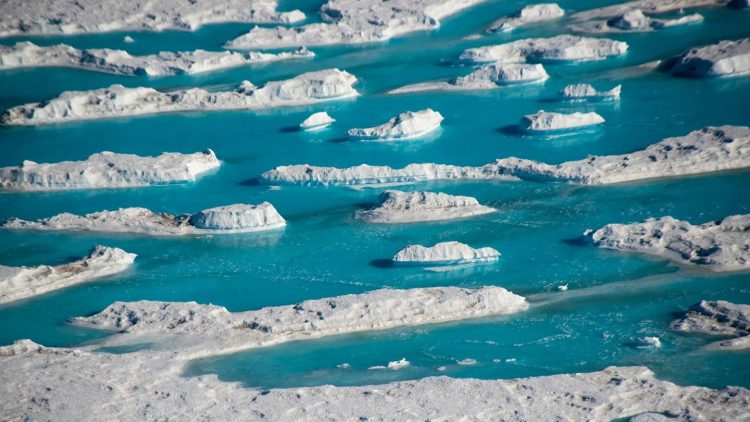
Credit: Nicholas Bayou, UNAVCO.
The number of meltwater lakes on the surface of the East Antarctic Ice Sheet is more significant than previously thought, according to new research.
A study led by Durham University, UK, discovered more than 65,000 supraglacial lakes using high-resolution satellite imagery covering five million square kilometres of the ice sheet, including areas where surface melting was previously thought to be less intense.
This is the first time that researchers have been able to map the widespread distribution of lakes across a vast area of the East Antarctic Ice Sheet – the world’s largest ice mass – within a single melt year.
Although most of the ice sheet is incredibly cold, with temperatures plummeting to below -40 degrees Celsius in winter, summer temperatures can often reach above zero and cause surface melting. The study shows that meltwater lakes are forming in most coastal areas of the ice sheet, suggesting that East Antarctica could be more susceptible to the effects of a warming climate than previously thought.
The findings are published in the journal Scientific Reports.
The researchers looked at satellite images acquired in January 2017 during the East Antarctic Ice Sheet’s summer melt season.
The images showed that meltwater lakes often cluster just a few kilometres from where the ice sheet begins to float on the sea, but some can exist hundreds of kilometres inland and at quite high elevations, up to 1,000m.
About 60 per cent of lakes develop on floating ice shelves, including some potentially at risk of collapse if the meltwater lakes become large enough to cause fracturing and drain through the ice.
This new study allowed the researchers to see where lakes are forming in the highest densities due to surface melting and which parts of the ice sheet might be most vulnerable to climate change.
Many of the lakes were the size of a standard swimming pool while the largest measured over 70 square kilometres.
Lead author Professor Chris Stokes, in the Department of Geography, Durham University, said: “We’ve known for some time that lakes are forming in East Antarctica, but we were surprised at quite how many had formed and all around the ice sheet margin.
“The density of lakes in some regions is similar to the densities we’ve observed on the Greenland Ice Sheet and on the Antarctic Peninsula, which are generally viewed as much warmer.
“It’s concerning because we know that in other areas large numbers of lakes draining can fracture apart floating ice shelves, causing the inland ice to speed-up.”
The researchers said the number of lakes mapped was a minimum as some small lakes might have been missed, while others might have been bigger in December or February.
Professor Stokes added: “This dataset should help us better understand why lakes are forming where they are and that will help us predict how the distribution of lakes will change in the future, especially if air temperatures warm. Whilst there is no imminent threat to the stability of the ice sheet, our study has shown which areas we should be keeping an eye on over the next few years and beyond.”
Co-author Dr Amber Leeson, of the Lancaster Environment Centre, Lancaster University, UK, said: “At the opposite end of the Earth, we’ve seen Greenland’s population of supraglacial lakes spread inland as air temperatures have risen, and we’re concerned about the potential implications for enhanced melting and ice loss there. Until recently we assumed that East Antarctica was too cold to be similarly vulnerable, but this work shows that there may be closer parallels here to our observations on Greenland than previously thought.”
Co-author Dr Stewart Jamieson, in the Department of Geography, Durham University, said: “At a time where the pressure to act on climate change is increasing, it’s more important than ever to establish baseline measurements against which future change can be compared – this study will enable just that in relation to surface melting at the edges of the world’s largest ice sheet.”
###
The satellite imagery used in the study was obtained from the United States Geological Survey Earth Resources Observation Science Centre and the Copernicus Open Access Hub.
The research was funded by the UK Natural Environment Research Council.
ENDS
Media Contact
Leighton Kitson
[email protected]
Related Journal Article
http://dx.





